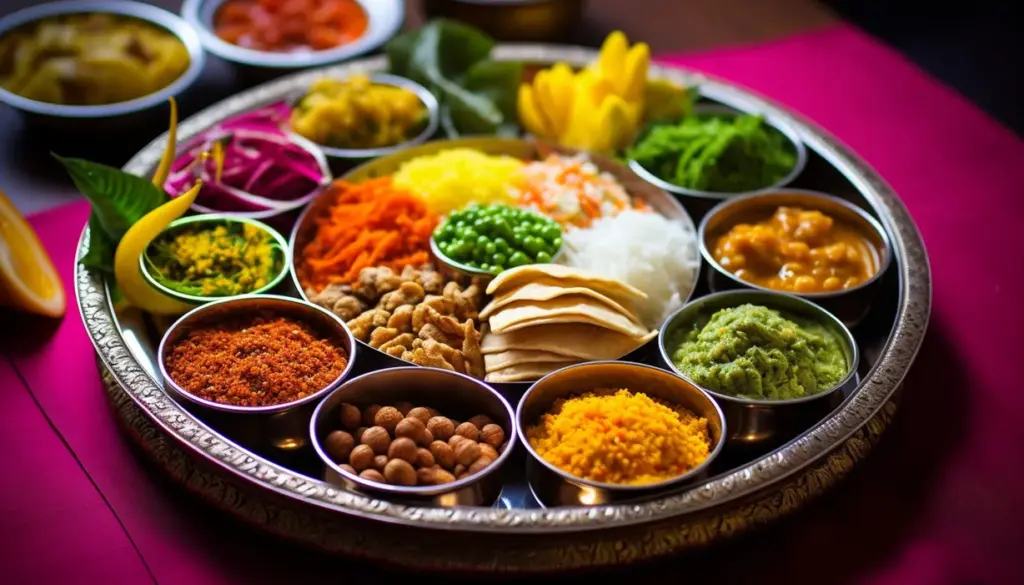Introduction
Indian cuisine is renowned worldwide for its vibrant flavors, rich spices, and diverse cooking techniques. Whether you’re a seasoned traveler or an adventurous foodie, this culinary journey through India will leave your taste buds tingling and your heart yearning for more. With each region boasting its own unique spice blends, there’s no better way to understand the spirit of India than through its food.
The Historical Significance of Indian Spices
India has been a cornerstone of the global spice trade for centuries. Spices like turmeric, cardamom, and saffron were once as valuable as gold and played a pivotal role in shaping the history and culture of the region. Not only do these spices elevate the food, but they also carry historical significance that binds generations together.
The ancient spice routes brought in wealth and new cultural influences, making India a melting pot of flavors and traditions. The spices have medicinal properties as well, often used in Ayurveda—a traditional system of medicine that has been practiced in India for more than 3,000 years.
North Indian Spice Blends: Aromatic and Robust
North Indian cuisine is characterized by its rich, creamy gravies and aromatic spices. Common spices used in this region include cumin, coriander, and garam masala—a robust blend of ground spices like cinnamon, cloves, and nutmeg. These spices create layers of flavor that tantalize the palate.
From the butter chicken of Punjab to the biryanis of Lucknow, North Indian dishes often have a hearty, comforting quality. Garam masala, in particular, is a staple that adds depth and warmth to countless dishes. The meticulous blending of these spices is what gives North Indian cuisine its soul.
South Indian Spice Blends: Flavorful and Spicy
South Indian cuisine is known for its bold flavors and liberal use of spices like mustard seeds, curry leaves, and tamarind. Dishes such as dosas, sambar, and rasam bring out the best in these spices, creating a symphony of tastes with each bite. The use of coconut, both grated and as oil, adds a unique richness to many Southern dishes.
The region’s coastal geography means seafood plays a prominent role in its cuisine. Fish and prawn curries are often spiced with distinctive blends like ‘Chettinad’ masala, which includes star anise, fennel seeds, and dried chilies. The result is a burst of heat and flavor that is as invigorating as it is delicious.
Western Indian Spice Blends: Diverse and Flavorful
Western India is a tapestry of diverse culinary traditions. From the sweet and spicy flavors of Gujarat to the fiery curries of Goa, this region offers a range of spice blends that cater to every palate. Goan cuisine, heavily influenced by Portuguese flavors, often features vinegar and coconut milk alongside traditional Indian spices.
Goda masala is a notable spice blend from Maharashtra, made from a mix of sesame seeds, coconut, and various spices. This blend lends a unique, slightly sweet aroma to dishes like ‘Puran Poli’—a type of sweet flatbread. Western Indian cuisine exemplifies how spices can vary even within small geographical areas, each with its own identity.
Eastern Indian Spice Blends: Subtle and Complex
Eastern Indian cuisine is perhaps the most subtle in its use of spices, focusing more on the natural flavors of ingredients like fish, rice, and vegetables. However, this does not mean the food is any less flavorful. Spices like panch phoron—a blend of five spices including fenugreek, nigella, cumin, black mustard seeds, and fennel—add complexity to the dishes.
Bengali cuisine, in particular, is famous for its fish dishes, often simmered in mustard oil and spiced with turmeric, cumin, and green chilies. The unique combination of flavors in Eastern Indian cuisine creates a delicate yet satisfying dining experience that shouldn’t be missed.
The Art of Blending Spices: Tips and Techniques
Blending spices is both an art and a science. The key to achieving the perfect balance lies in understanding how different spices interact with each other. Toasting whole spices before grinding them can unleash their full aromatic potential.
Another tip is to grind spices in small batches to maintain their freshness. Most importantly, don’t be afraid to experiment. The beauty of Indian cuisine is its flexibility and depth, allowing room for personal creativity while adhering to traditional guidelines. Mastering the art of spice blending can elevate your culinary skills to new heights.
Popular Indian Dishes to Try
If you’re new to Indian cuisine, there are several must-try dishes that showcase the country’s rich spice blends. Butter chicken, known for its creamy tomato sauce and garam masala, is a favorite worldwide. Biryani, a fragrant rice dish spiced with saffron and cardamom, offers a delightful interplay of textures and flavors.
Don’t miss out on dosas, paper-thin crepes made from fermented rice batter and served with an array of chutneys and sambar. Each of these dishes offers a unique glimpse into the diverse world of Indian spices, making them essential stops on your culinary journey.
Why You Should Travel to India for Culinary Exploration
There’s no better way to understand a culture than through its food, and India offers an unparalleled culinary experience. Traveling to different regions of India will introduce you to distinct spices, cooking techniques, and dishes that you won’t find anywhere else.
From bustling markets brimming with fresh spices to cooking classes that teach traditional methods, India provides a hands-on experience that allows you to fully immerse yourself in its culinary traditions. Your taste buds, as well as your understanding of the world, will be richer for it.
Conclusion
The spice blends of Indian cuisine offer a fascinating exploration into one of the world’s most diverse and flavorful food cultures. Each region, with its unique spices and culinary traditions, contributes to a rich tapestry that is truly Indian. Whether you’re cooking at home or planning a culinary tour in India, the journey through Indian spices is sure to be an unforgettable experience.
Your adventure awaits, so pack your bags and get ready to discover the magic of Indian spices!



